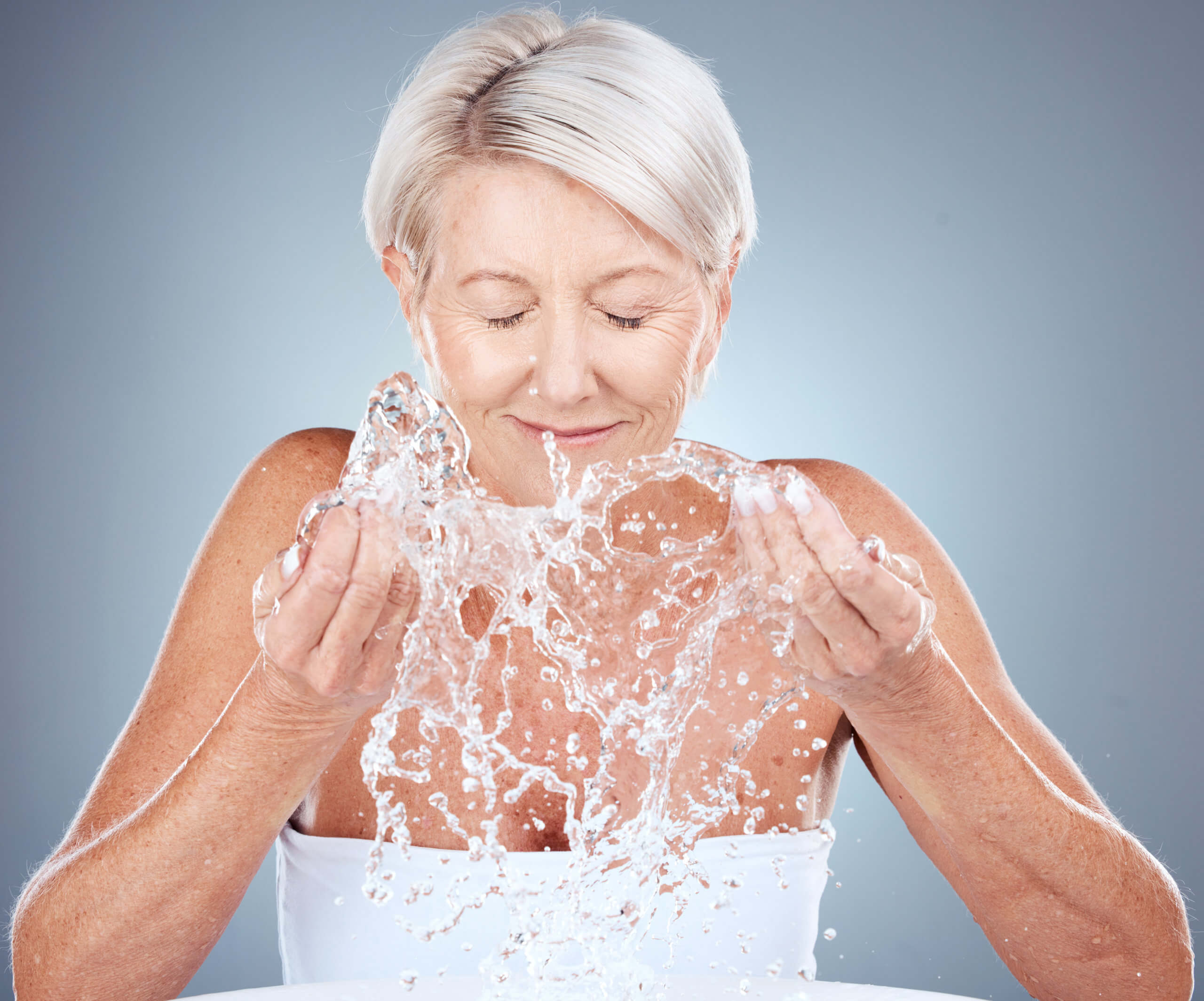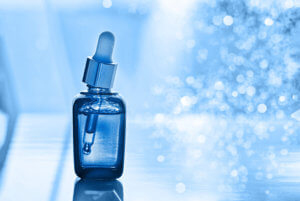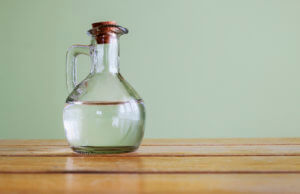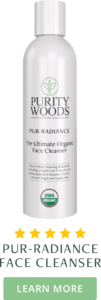Some skincare ingredients are the stars of the show, while others play more of a supporting role. Glycerin belongs to the latter group, but it does have some special superpowers that make it stand out from the crowd.
In fact, glycerin is so outstanding for your skin that it’s very likely you’ve already used it without realizing. This is because it gets added to numerous skincare products for its moisture-boosting, skin-enhancing properties.
For more about the origins of this hardworking ingredient and the specific skin benefits of glycerin, here’s a deep dive into how it works and what it can do for your complexion.
What is Glycerin? A Highly Versatile Ingredient
Glycerin (also called glycerol or glycerine) is a colorless, odorless liquid that can be derived from animal or vegetable fats or synthetically produced. Always opt for vegetable-derived glycerin where possible. In its pure form, glycerin is thick and almost syrupy with a sweet flavor.
As an ingredient, glycerin is extremely versatile— and not just for skincare.
It has soothing, moistening properties that make it useful as a component of throat drops. The sweetness of glycerin means it can be used as a sweetener for food products. It also helps prevent ice crystals from forming in frozen foods (like frozen yogurt) AND helps oil- and water-based ingredients to mix together.
You can find glycerin in a number of everyday products like toothpaste, deodorant, soap, candles, and makeup. It’s even commonly used to make non-alcoholic herbal extracts, giving them a shelf life of 1-2 years.
Of course, you’ll see glycerin appear in many different skincare products as well, including lotions, serums, cleansers, gels, and face masks. It acts as an emulsifier, thickener, preservative, and hygroscopic ingredient all in one, which is incredibly impressive!
So what does all that translate to when it comes to your skin? You’re about to find out…
Top Skin Benefits of Glycerin
Draws Moisture to Your Skin

In technical terms, glycerin is known as a humectant. This means that it pulls moisture from the air into the top layer of skin, improving hydration. And because it has a low molecular weight, glycerin is able to absorb deeply into your skin to provide moisture throughout.
Not surprisingly, the humectant properties of glycerin give it a lot of power for combating dry skin.
It helps to quickly replenish hydration and can improve the appearance of dry, cracked, and dull skin without feeling heavy. When paired with occlusive ingredients, like mango butter, the moisturizing power of glycerin will last even longer.
Glycerin isn’t just an ordinary humectant, though.
According to one study, it was the most effective out of all humectants tested, beating out ingredients like hyaluronic acid, alpha hydroxy acids, and propylene glycol. And if that wasn’t impressive enough, research also shows that glycerin mimics the natural moisturizing factor (NMF) of skin, which helps prevent skin dehydration.
Has Emollient Properties that Soften Skin
Along with acting as a humectant, glycerin has emollient qualities that help to smooth and soften skin. While other emollients usually do this through their fatty acid content, glycerin appears to work mainly by improving both skin hydration and skin barrier function.
There’s also some research that indicates glycerin is important to the transport and activity of a protein known as aquaporin-3 (AQP3).
Aquaporins are small proteins that regulate water flow into and out of cells. AQP3 is the main aquaporin present in your outer layer of skin (the epidermis) and plays a key role in skin cell function, including hydration and wound healing.
Researchers theorize that by supporting the function of AQP3, glycerin can help keep your skin feeling soft, supple, and well-hydrated, even if the air around you is dry.
Non-Oily Alternative for Serums, Cleansers, Etc.

Plant-based oils have a lot going for them when it comes to skincare, but sometimes it’s good to have an alternative.
For example, maybe you have oily skin and don’t like to go heavy on oils in general, or maybe you just want a lighter-weight formula for summer.
Whatever the reason, you may have noticed that the moisturizing skin benefits of glycerin are very similar to those of oils like sunflower oil, even though it’s not an oil itself. (Fun Fact: Glycerin is a component of natural fats/oils and is split from the fatty acids of the oil when it’s produced.)
This makes glycerin an excellent ingredient for non-greasy yet hydrating serums— like this Elastin Boost Hyper-Lift Serum from Purity Woods.
It can also add hydration to a facial cleanser to keep your skin from feeling dry without making the cleanser heavy or pore-clogging.
Of course, for those times of the year when your skin is thirsty for the rich nourishment of plant oils, glycerin can be combined with them in a formula that naturally provides tons of moisturizing power.
Promotes Better Skin Barrier Function
This was touched on briefly in the emollient section, but one of the best benefits of glycerin for skin is its ability to improve skin barrier function.
Your skin’s natural barrier is made up of layers. The outer layer is the most protective one and ideally should be keeping moisture locked into your skin while also keeping toxins, including free radicals, out.
To do this, your skin barrier is built almost like a brick wall with resilient cells known as corneocytes (the bricks) being held together by a lipid mixture (the mortar).
Unfortunately, as your skin is exposed to stressors over time, this “wall” starts to degrade and your skin barrier becomes compromised. This means it will have a tougher time maintaining hydration and opens your skin up to irritation, sensitivity, and various skin issues.
Now for some good news: There are various ingredients that can help to repair your skin barrier, and glycerin is one of them.
In fact, not only does it promote better skin barrier function as a whole, it also helps to protect your skin from irritants that might cause more damage. Not bad for an “ordinary” ingredient!
May Speed Wound Healing

Because it’s so beneficial for skin barrier repair, research shows that there may also be skin benefits of glycerin for wound healing.
In one study, a glycerin-based ointment was used to treat skin wounds. Not only did the ointment improve wound healing, it also reduced symptoms like pain, tightness, crusting, and stinging. As a bonus, dryness, cracking, and swelling post-surgery were reduced as well!
Now, the amount of glycerin used in the ointment was more than most everyday skincare products contain.
However, even smaller amounts of glycerin can still help to repair stressed and damaged skin, especially when combined with other nourishing ingredients.
Interestingly, some research has even discovered that glycerin possesses antimicrobial properties, which could explain part of its wound-healing ability. But research hasn’t made clear yet whether these properties translate to skincare products or not.
Enhances Exfoliation for Brighter-Looking Skin
Glycerin is not an exfoliator on its own, but it may help enhance the effects of other exfoliators.
Exfoliation is something that happens in your outer layer of skin and involves the removal of dead skin cells. By getting these dead cells out of the way, new skin cell production is encouraged and dull skin starts to regain its natural glow.
Because glycerin softens and restores moisture to the outer layer of skin, it makes the whole exfoliation process easier. This, in turn, can translate into a brighter complexion with fewer exfoliation sessions.
Another benefit to combining glycerin with physical or chemical exfoliators is the fact that it protects skin hydration. Exfoliation is a necessary part of keeping your skin looking healthy and youthful, but overdoing it can cause serious irritation.
By adding moisture to your skin AND improving skin barrier function, glycerin helps your skin stay happy during exfoliation. (But you’ll still want to be careful not to overdo it.)
May Offer Relief for Certain Skin Issues

Given the hydrating, soothing nature of glycerin, it’s no surprise that it may have benefits for certain skin issues like dermatitis and eczema. To be more specific, it appears to help with issues related to dryness, irritation, and inflammation.
In one clinical evaluation, a glycerin-based cream was used for four weeks by participants with atopic dermatitis. The results were very positive, showing that the glycerin cream improved hydration and restored skin barrier function. It also improved erythema (redness/irritation) over time.
A similar study found that a glycerin-based cream was helpful for relieving dry skin related to eczema. Most notably, it was tolerated much better than a standard urea-saline cream.
While more clinical trials are needed to fully uncover glycerin’s potential to ease eczema and dermatitis, the results so far (as you can see) are quite impressive.
It’s also worth pointing out that glycerin makes an excellent moisturizing ingredient for acne-prone skin. It won’t actively fight acne, but you don’t have to worry about it causing breakouts like some oils can.
Good for Sensitive Skin & All Skin Types
There’s really no skin type that can’t benefit from glycerin.
It’s a non-irritating ingredient that is suitable for sensitive skin and may even help improve sensitivity over time. Glycerin is also considered to be non-allergenic and is scentless, so you don’t have to worry about it triggering a fragrance-related reaction.
For dry skin, glycerin helps to pull in much-needed moisture, although it will be more effective when combined with plant-based oils or butters to really lock in that moisture.
And despite these moisturizing effects, glycerin is light on your skin, non-greasy, and won’t clog pores. This makes it equally beneficial for oily or combination skin, which both need hydration, too!
Note: Allergic reactions to properly diluted glycerin are very rare but possible. If you are concerned, do a patch test with a glycerin-containing product before applying it to a wider area of skin.
Key Tips for Using Glycerin in Skincare

If you want to get all the skin benefits of glycerin, it’s not hard to do. Many skincare products already contain glycerin, although you can look for specific products with a higher than normal glycerin content if desired.
However, there are a few important tips to keep in mind before applying glycerin to your skin:
- Don’t apply it undiluted— Undiluted glycerin is super concentrated and should not be applied to your skin. It can cause major irritation and even blistering if used this way, which is the opposite of what you want. Because of this, it’s best not to make DIY skincare using glycerin unless you fully know what you’re doing. Instead, look for quality, natural products that contain this ingredient.
- Look for plant-based glycerin— As mentioned at the beginning of this article, glycerin can be sourced from either animal- or plant-based fats and can also be produced synthetically. Synthetic glycerin is derived from petroleum, while the animal version usually comes from rendered mutton or beef fat (yuck). It is recommended to always look for products made with vegetable glycerin that is derived from plant oils.
- Opt for organic whenever possible— Vegetable glycerin is typically made from soy, palm, and/or coconut oils. Because soy is a big GMO crop (and to avoid potential pesticide residue) look for products made with organic glycerin whenever possible. The USDA Organic seal means that a plant-based ingredient cannot be GMO in origin and also protects you from synthetic ingredients, additives, etc.
Glycerin + Younger-Looking Skin
If you want to erase the appearance of fine lines, wrinkles, and dark spots while also enjoying the hydrating benefits of glycerin for skin, Purity Woods has two outstanding products that contain plant-derived glycerin as a supporting ingredient.
The Pur-Radiance facial cleanser is a blend of 21 pure, USDA Organic botanicals that effectively cleanse skin without stripping it. Ingredients like the three elastin-boosting maple leaf extracts go to work against signs of aging, while others like glycerin and jojoba oil make sure your skin stays moisturized.
Learn more about the Pur-Radiance cleanser here.
For even more age-defying power, add the Elastin Boost Hyper-Lift Serum to your skincare routine. Also USDA Certified Organic, this serum is lightweight, highly effective, and non-greasy. It features the same three maple leaf extracts to restore the appearance of youth to your skin and hydrates with ingredients like glycerin and chamomile extract.
Learn more about the Elastin Boost Hyper-Lift Serum here, and give plant-derived glycerin some well-deserved appreciation the next time you use it in a skincare product!


